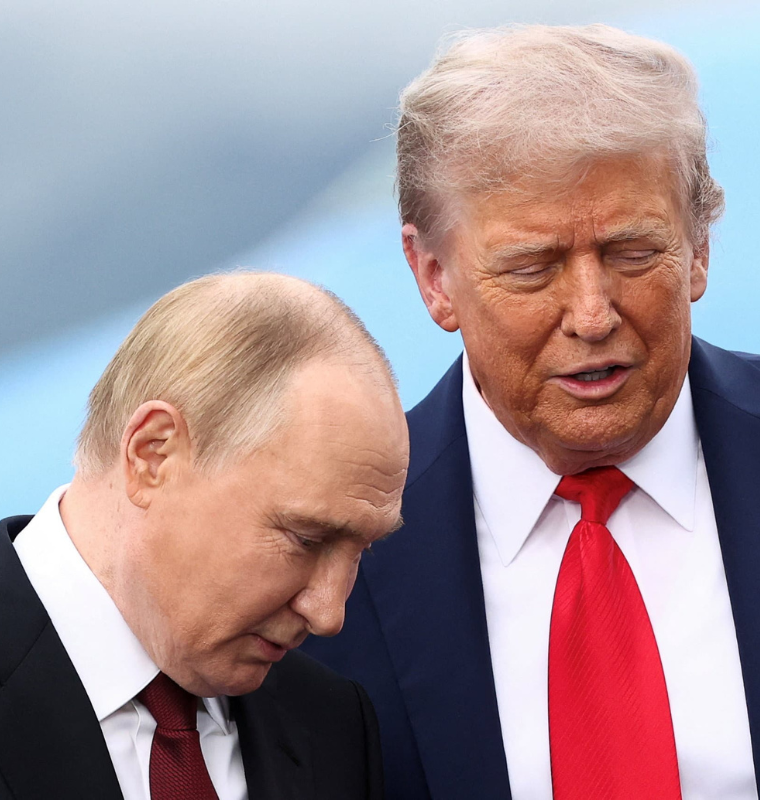Trump and Xi Strike Hopeful Tone in South Korea Meeting, Pledge to Strengthen U.S.-China Partnership
Trump and Xi Strike Hopeful Tone in South Korea Meeting, Pledge to Strengthen U.S.-China Partnership
By
Rachel Steinberg
Last updated:
October 30, 2025
First Published:
October 30, 2025

Photo: South China Morning Post
Renewed Dialogue Between the World’s Two Largest Economies
In a meeting closely watched by global markets, U.S. President Donald Trump and Chinese President Xi Jinping met in Busan, South Korea, on Thursday, marking their first in-person talks since Trump’s return to the White House earlier this year. The highly anticipated discussion, lasting one hour and forty minutes, centered on trade, tariffs, and economic cooperation between the world’s two largest economies.
The encounter began with a photo opportunity at Gimhae Air Base, where both leaders exchanged warm gestures before moving into private talks. “We are going to have a very successful meeting,” Trump told reporters, calling Xi “a very tough negotiator” but emphasizing their long-standing “very good relationship.”
Xi, in turn, set a conciliatory tone, describing the U.S. and China as “partners and friends.” He acknowledged that “it is normal for two leading economies to experience friction now and then” but urged both sides to “steer the giant ship of relations steadily forward,” according to China’s Foreign Ministry.
Focus on Trade, Tariffs, and Technology
The talks aimed to ease tensions that have strained U.S.-China relations throughout 2025. Key topics on the table included tariffs, technology restrictions, rare earth supplies, and fentanyl trade controls.
The U.S. delegation also discussed the divestiture of TikTok from its Chinese parent company ByteDance, a move Washington says is essential for national security. Additionally, Trump pressed for stronger Chinese enforcement against fentanyl exports, which U.S. officials have long blamed for fueling the American opioid crisis.
Ahead of the meeting, both sides made small but symbolic gestures of goodwill. China resumed U.S. soybean purchases for the first time in months, signaling a tentative thaw in agricultural trade. Meanwhile, Trump hinted at a “great understanding” potentially emerging from the talks but stopped short of confirming any new deal.
Economic and Political Context
The Busan summit comes at a critical juncture in global politics. China’s export controls on advanced technology and Washington’s plans to limit AI-driven software exports have intensified the trade war that began years earlier. Both economies are also grappling with domestic challenges: a slowing Chinese property market and U.S. inflationary pressures tied to supply chain disruptions.
Trump’s administration, which has emphasized “America First” trade policies, faces mounting pressure to stabilize relations with China while protecting U.S. manufacturing interests. Meanwhile, Xi’s government seeks to maintain economic growth amid shrinking foreign investment and rising global skepticism toward Beijing’s trade practices.
“The meeting represents more of a tactical pause than a strategic breakthrough,” said Han Shen Lin, China director at The Asia Group. “But even a temporary truce is better than an uncontrolled trade war.”
Xi’s Visit and Trump’s Strategic Messaging
Xi’s South Korea visit—his first in over 11 years—coincides with the APEC Economic Leaders’ Meeting in Gyeongju, where discussions on trade integration and regional growth are expected to continue. The timing underscores Beijing’s effort to present a cooperative image to both Asian and Western partners.
Just hours before the summit, Trump posted on Truth Social that he had instructed the Pentagon to resume nuclear weapons testing, claiming the U.S. possesses “the world’s largest nuclear arsenal, followed by Russia and China.” The statement, which analysts described as “bold and disruptive,” appeared to be a strategic move aimed at reinforcing U.S. leverage before the talks.
“If it lands a trade win, it’s genius,” Lin added. “If it poisons the atmosphere, we could be looking at frostier summits in the months ahead.”
Markets and Global Reaction
Global markets reacted with cautious optimism. Investors worldwide closely monitored the Busan talks, hopeful for signs of easing trade tensions that have long weighed on supply chains and investor sentiment. The Dow Jones Industrial Average and Asian indices opened higher earlier in the week amid growing confidence that Washington and Beijing were ready to reopen dialogue.
“A return to consistent engagement—regardless of short-term outcomes—is essential to move the U.S.-China relationship forward,” said Curtis Chin, chair of senior fellows at the Milken Institute and former U.S. ambassador to the Asian Development Bank.
However, Chin cautioned that “headline-making summits must be followed by real policy execution and clear commitments from both sides.”
Outlook: Dialogue Over Division
While the Trump-Xi meeting ended without major announcements, analysts view it as a symbolic reset that could lay the groundwork for deeper discussions in the coming months. Both leaders’ emphasis on friendship and cooperation stands in contrast to the heated rhetoric of recent years, offering a brief respite in a relationship defined by competition and mistrust.
With trade negotiations, technology controls, and security issues still unresolved, the road ahead remains complex. Yet, as both presidents left Busan, the tone of the meeting—marked by diplomacy rather than confrontation—suggests that the world’s two superpowers are once again willing to talk, even if only to prevent a new economic cold war.
Popular articles
Subscribe to unlock premium content
The Business Behind Handcrafted Japanese Knives That Sell for Thousands

How Calm Turned Bedtime Stories Into a $1 Billion Wellness Empire

The Rise of AI Digital Pets as a Billion-Dollar Fantasy

The Business Behind Handcrafted Japanese Knives That Sell for Thousands

How Calm Turned Bedtime Stories Into a $1 Billion Wellness Empire

The Business Behind Handcrafted Japanese Knives That Sell for Thousands









